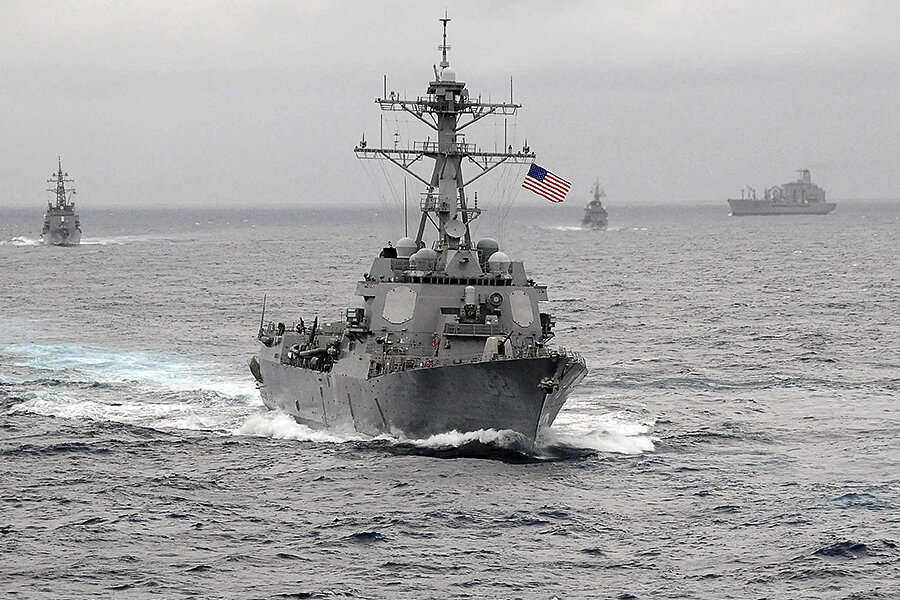Irking China, US sends naval destroyer on patrol in South China Sea
Loading...
A United States Navy warship sailed close to one of China’s artificial islands in the South China Sea on Tuesday in an open challenge to Beijing’s territorial claims.
The USS Lassen, a guided-missile destroyer, sailed within 12 nautical miles of Subi Reef in the Spratly Islands, a group of reefs, islets, and atolls where the Philippines and other littoral states have competing claims. China controls the uninhabited reef.
US officials told the Washington Post that the long anticipated sail-past was intended to underscore Washington’s refusal to accept China’s claim to territorial waters around man-made islands. They did not inform their Chinese counterparts of the mission, saying that doing so would have undercut their message.
“You don’t need to consult with any nation when you are exercising the right of freedom of navigation in international waters,” John Kirby, the State Department spokesman, said at a news conference.
The mission was reportedly completed without incident. While the Lassen did not encounter any resistance, Chinese ships trailed it through its journey, a US defense official told NBC News.
The provocative maneuver drew angry protests from Beijing, which accused Washington of threatening US-China relations and regional peace.
China’s Foreign Ministry expressed its “strong discontentment and resolute opposition” to the US action in a statement on its website. A commentary by the official Chinese news agency Xinhua called it a “willful and harmful game of brinkmanship.”
Reuters described the sail-past as “the most significant US challenge yet” to China’s territorial claims in the South China Sea, one of the world’s busiest shipping lanes.
The decision to go ahead with the mission follows months of deliberation in Washington. The Obama administration has long said it would exercise a right to freedom of navigation in any international waters, reports the Associated Press. The US military routinely carries out such missions to highlight what it calls "excessive maritime claims" by China and other countries.
Many officials have pushed for the US to more forcefully assert its position that China's artificially built islands cannot be considered sovereign territory.
"By using a guided-missile destroyer, rather than smaller vessels ... they are sending a strong message," Ian Storey, a South China Sea expert at Singapore's Institute of South East Asian Studies, told Reuters. "They have also said, significantly, that there will be more patrols – so it really now is up to China how it will respond."
Since 2013, China has been reinforcing its claim of sovereignty over large parts of the South China Sea by piling sand atop reefs and atolls. It then adds buildings, ports, and airstrips to the constructed islands. Some are large enough to support military garrisons, land fighter jets, or to dock large naval vessels, the Monitor’s Peter Ford reported earlier this year. He noted that “Beijing believes it can get away with the nervy move and bolster an old desire for regional dominance.”
“China has wanted to do this for a long time,” Zhang Jie, head of the Asia Pacific Security program at the government-linked Chinese Academy of Social Sciences, told the Monitor. “Now it has the dredging boats, the money and the people. So it is doing it.”
Andrew Browne, a columnist for the Wall Street Journal, writes that China may have overplayed its hand. He points out that China has plenty to lose if tensions turn into risky encounters in the strategic waterway.
Nationalism is the wild card. It’s inconceivable that [President Xi Jinping], a popular strongman, won’t respond in some way, and he’ll be under greater pressure to act if public opinion becomes inflamed. The next move belongs to the Chinese president. Fresh from his triumph in presiding over a military parade to mark the 70th anniversary of Japan’s surrender in World War II, he is not about to signal weakness.







